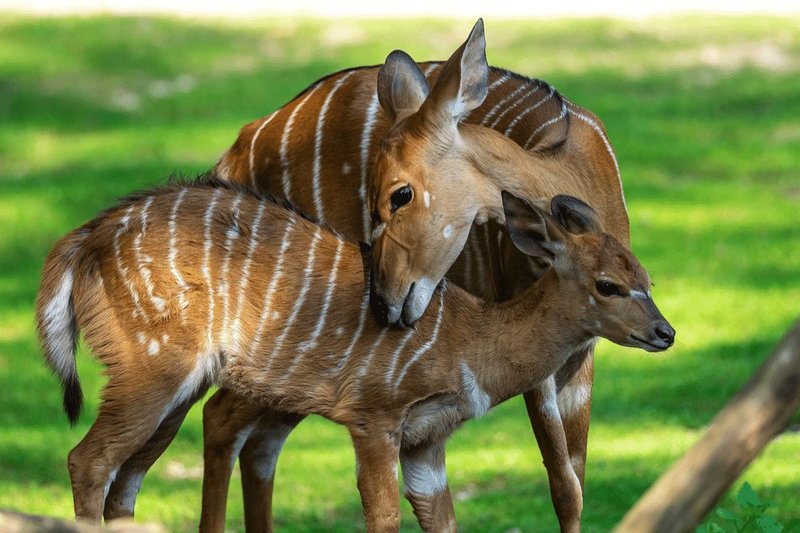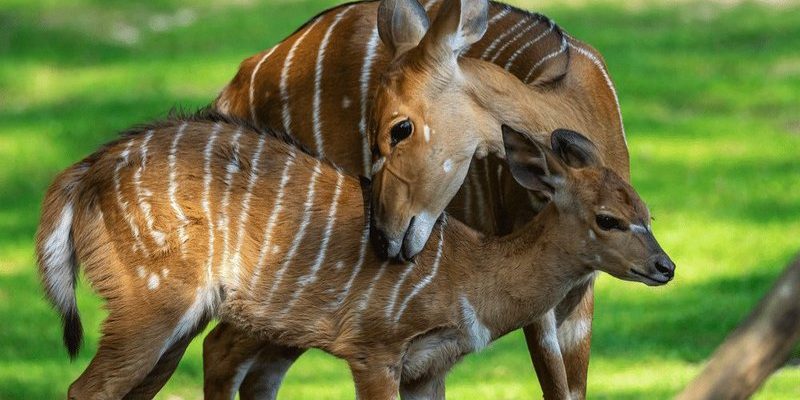
Imagine trying to survive in a place where food and water can be scarce. To us, it sounds daunting, but for the nyala, it’s a daily challenge they handle with grace. Their survival skills are like a well-rehearsed dance, balancing between finding food, staying safe from predators, and enduring the heat of their environment. So, how exactly do these stunning creatures do it? Let’s explore their fascinating world and uncover the incredible strategies they use to survive in harsh conditions.
Adaptations to a Dry Climate
Nyalas primarily inhabit bushy regions, grasslands, and dense thickets. These habitats can be incredibly dry, especially during the hot season. To adapt, nyalas have developed several features that ensure they thrive even when water sources dwindle. Here’s the thing: their bodies are incredibly efficient when it comes to conserving moisture.
For instance, nyalas can extract moisture from the vegetation they consume. This means that even if there’s little standing water, they can stay hydrated by munching on juicy leaves and shrubs. Plus, their thick skin helps reduce water loss through perspiration. Imagine wearing a cozy wool sweater on a chilly day—it helps keep your body warmth in, right? In a similar way, nyalas’ skin helps keep moisture contained in a dry environment.
Dietary Flexibility
Let’s talk about what nyalas eat. These antelopes are herbivores with a very flexible diet, meaning they can adapt their eating habits based on what’s available. This is crucial in harsh environments where food sources may change drastically. You might be wondering how they manage to find enough to eat in different seasons.
Nyalas enjoy a mix of grasses, leaves, shoots, and fruits. During the rainy season, they feast on fresh greens, while in the dry season, they switch to more fibrous plants and tough leaves. It’s like a smart shopper knowing what’s in season at the grocery store! This adaptability in diet means that they can find food even when it’s scarce, giving them a better chance of survival.
Camouflage and Social Behavior
A big part of surviving in the wild is avoiding predators. Nyalas have an incredible advantage—camouflage. Their coats sport a brownish-grey color with white stripes and spots that help them blend into their surroundings. Imagine wearing a chameleon costume at a party; it would be hard to spot you among greenery!
But it’s not just their coloring that helps them stay safe. Nyalas are also quite social creatures. They often stick together in groups, allowing them to watch out for each other. When one sees a predator, the whole group can react quickly, making it harder for the predator to catch a single animal. This strategy is not just smart; it’s a survival tactic that has worked well for them over countless generations.
Heat Tolerance and Activity Patterns
Living in hot environments means finding ways to cope with high temperatures. Nyalas are crepuscular, which means they’re most active during dawn and dusk. This behavior helps them avoid the scorching heat of midday. Think of it like planning your outdoor activities around the sun’s schedule—getting things done in the cooler hours is much more pleasant!
During the hottest parts of the day, nyalas often seek shade under trees or bushes. They’ll rest and conserve their energy, waiting for the cooler evening to resume their foraging. It’s all about timing and using the environment to their advantage.
Water Conservation Strategies
Nyalas have impressive abilities when it comes to conserving water. If you think about it, this is absolutely crucial in a place where water isn’t always nearby. They can survive for days without drinking, relying on the moisture gathered from their food.
Their kidneys are also specially adapted to retain water. This means that when they do drink, their bodies effectively use every drop. It’s like having a highly efficient water bottle that never leaks. So, when other animals might struggle to find water, nyalas are often able to hold out longer, which can make all the difference in survival.
Interactions with the Ecosystem
Nyalas play an important role in their ecosystem. By feeding on various plants, they help control vegetation growth and promote a diverse environment. You might think of them as nature’s gardeners. When they munch on certain plants, they create space for new growth, which benefits many other species.
In turn, their presence can attract predators, which helps maintain a natural balance within the ecosystem. It’s a cycle of life where every creature, including the nyala, plays a part. This interconnectedness highlights how important it is for these antelopes to thrive amidst the challenges of their environments.
Final Thoughts on Nyala Survival
Nyalas are a fascinating example of how wildlife adapts to survive in harsh environments. From their dietary flexibility and physical adaptations to their social behavior and role in the ecosystem, these antelopes showcase resilience in nature. Honestly, it’s inspiring to see how life finds a way to flourish, even under tough conditions.
Next time you think about survival in the wild, remember the nyala and its incredible journey through the savannahs and bushlands of southern Africa. They might not be the loudest or flashiest animals out there, but their quiet strength and adaptability teach us some of life’s most valuable lessons. So, here’s to the nyala—nature’s embodiment of endurance and grace!

